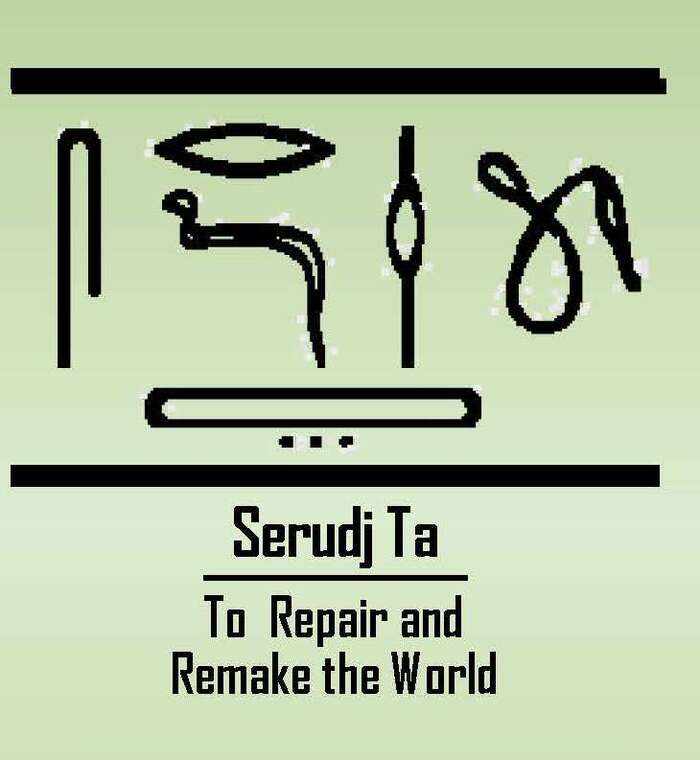Nowhere is this principle more clearly expressed than in the literature and culture of ancient Egypt. Creativity here is both an original act or imitation of the Creator and a restorative act, also, reflective of the Creator constantly pushing back the currents of chaos and decay and revitalizing and restoring the natural, spiritual and cosmic energy of the world. In ancient Egypt, there was a spiritual and ethical commitment and obligation to constantly renew and restore the great works, the legacy of the ancestors, and the creative energy of the leader and nation. This was considered doing Maat, i.e., reaffirming and restoring truth, justice, propriety, harmony, balance, reciprocity and order. Each pharaoh saw his or her reign, then, as one of restoration of Maat, i.e., the reaffirmation, reestablishment and renewal of the Good, the Beautiful and the Right. This concept of restoring Maat includes the concept of serudj ta (restoring the world) used above in discussing the right relationships with the environment (see page 23).
Therefore, Queen Hatshepsut says of her reign, "I have restored that which was in ruins; I have raised up that which was destroyed when the Aamu were in the midst of Kemet, overthrowing that which had been made, as they ruled in ignorance of Ra (God)." And King Shabaka found a great work of the ancestors in ruins, the Memphite text on creation, and he restored it "so that it was more beautiful than before."51 This latter contention of restoring the work "so that it was more beautiful than before" is also central to the concept of restoration and was a regular claim of the king, queen, priests and leaders. These concepts of restoration and progressive perfection which are key concepts in the philosophy of Kawaida and which reflected a fundamental cultural thrust of the 1960's, informed the conception and development of Kwanzaa. And, of course, they became a goal and value of Kwanzaa in the principle and practice of Kuumba (Creativity) which again is defined as "To do always as much as we can, in the way we can, in order to leave
our community more beautiful and beneficial than we inherited it." Also, restoration as principle and practice is central to the fifth principle of Nia whose essential thrust is "to restore our people to their traditional greatness." Thus, one has an interrelatedness and interlocking of principles and therefore a similar relationship in the practice of them.
51- Maulana Karenga, "Restoration of the Husia: Revising a Sacred Legacy" in Maulana Karenga and Jacob Carruthers (eds.), Kemet and the African Worldview, Los Angeles: University of Sankore Press, 1986, p. 97.



